How to Do the Ring Arch Trail – A Hidden Gem in Arches National Park
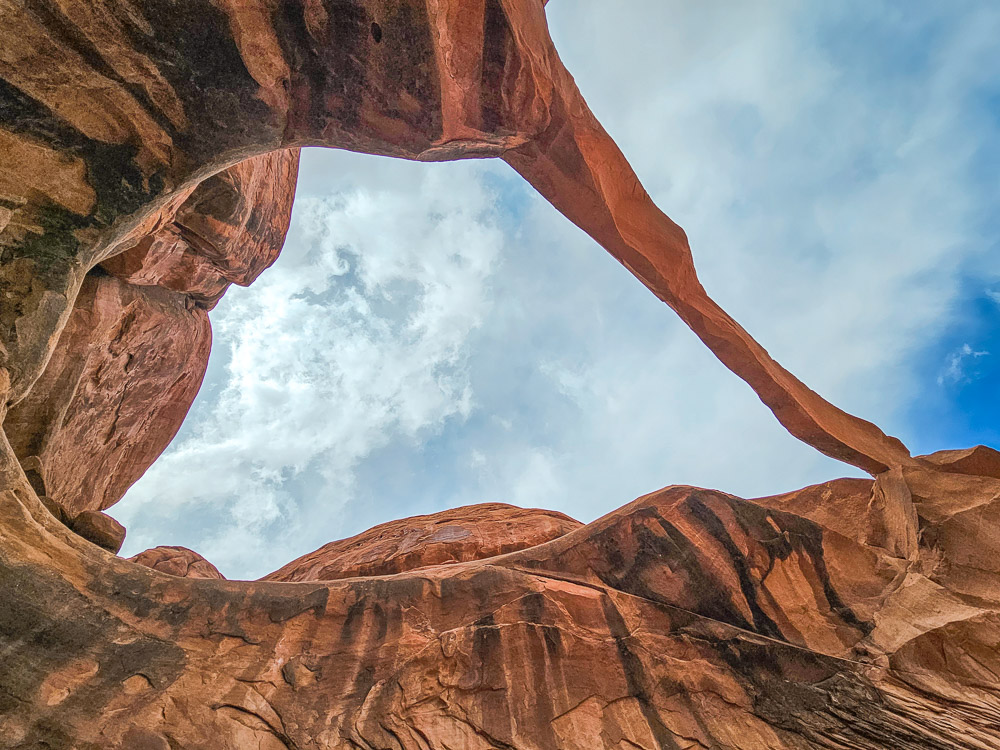
Arches National Park is famous for its striking red rock landscapes and more than 2,000 natural arches scattered throughout its boundaries. While most visitors stick to the main trails and well-known formations like Delicate Arch or Landscape Arch, there are plenty of lesser-known spots hiding in plain sight.
I’ve visited Arches three times now, and literally done every hike on the map. On our most recent trip, we asked a ranger if there were any fun trails not shown on the park map, and that’s how we discovered Ring Arch, a quiet, off-the-radar hike with hardly anyone else around.
It’s not marked on official park signage, but it’s absolutely worth the stop if you’re looking for something unique and peaceful in Arches.
Ring Arch Hike Stats
- Distance: 3 miles/5 kilometers
- Elevation Gain: 200 feet
- Difficulty: Easy
- Time to Complete: Just over an hour
Getting Started
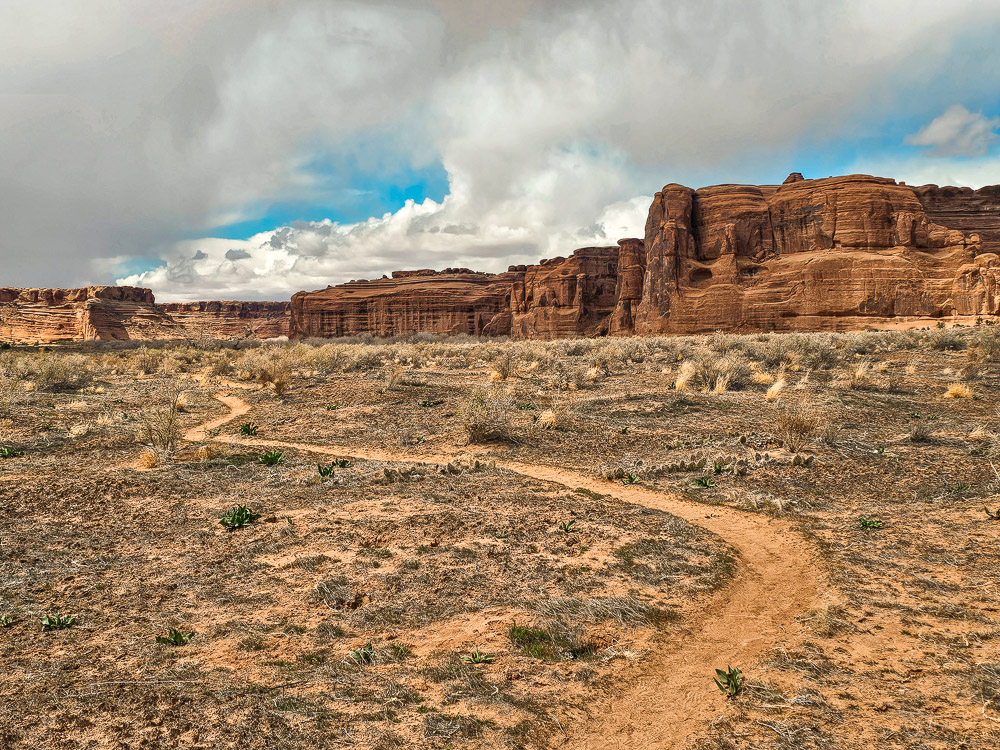
There is no official parking for Ring Arch, but rather just a paved pull-off on the side of the main Arches National Park Road, just north of the Courthouse formations. Specifically, it is just on the north side of Courthouse Wash and the associated bridge. You can find the location here.
You’ll spot a line of rock fins to the west—that’s where you’re headed. The path leads through grass and scattered cacti toward the formations, eventually dropping into a wide wash.
The Trail
The hike is 3 miles round trip and is a very easy trail— there’s very little elevation change until the very end. You will spend most of your time walking amongst the scrub, but you do go in and out of washes a couple of times, so expect some sandy sections along with the packed dirt and slickrock sections.
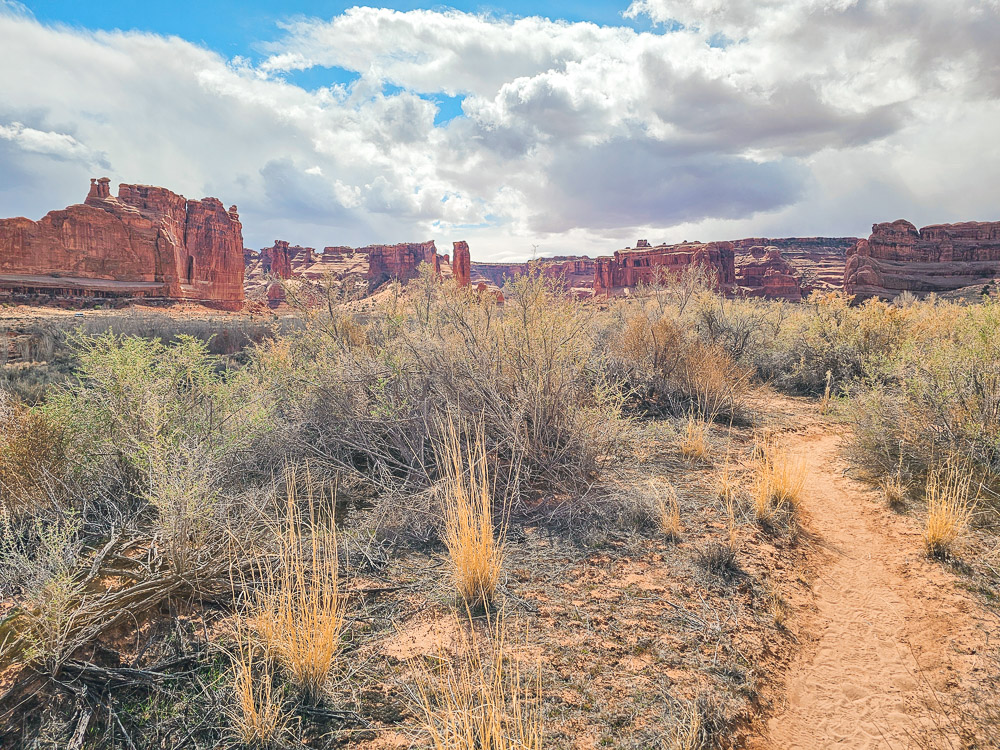
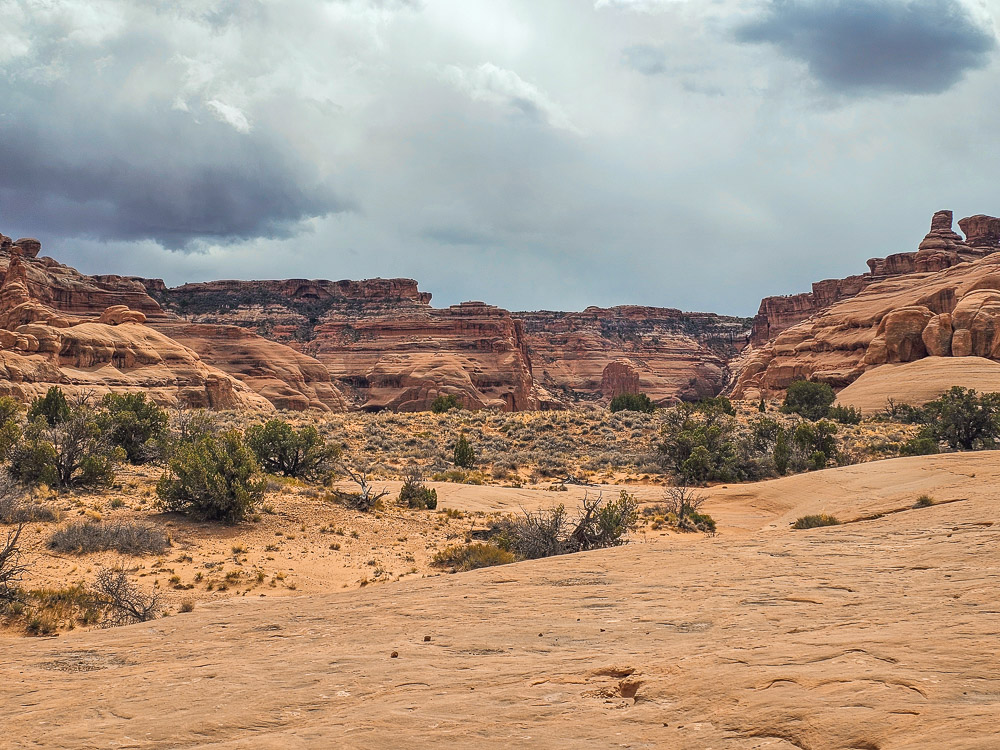
The trail is very quiet and you’ll pass very few other hikers, which is a nice change of pace in this popular park.
As you head toward Ring Arch, you’ll pass some beautiful canyon walls. If you keep an eye out, you can spot places where new arches are starting to form, along with all kinds of interesting shapes in the rock.
The final ascent to the base of Ring Arch is up a steep, rounded rock face. Thankfully, being sandstone, the rock is pretty grippy, but shoes with good traction are still very helpful.
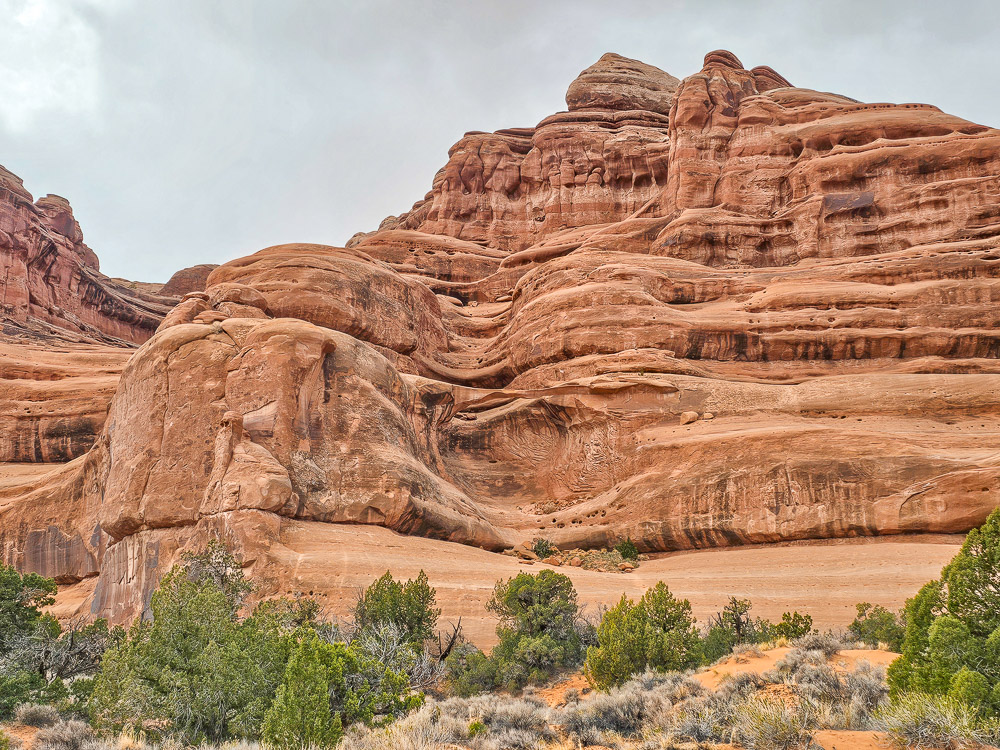
Ring Arch

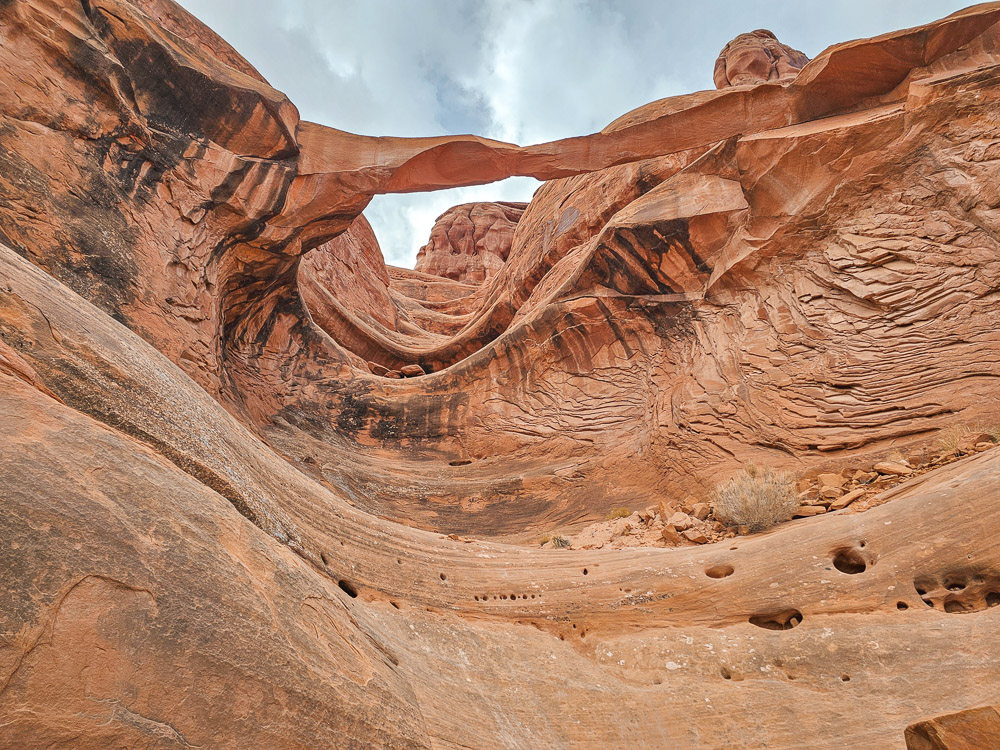
Ring Arch is lovely! It delicately spans a bowl-shaped section in the rock. It is extremely thin; the arch is in the final stage of arch evolution and is very delicate and fragile. You’ll likely notice some cracks in it — it sadly may not be around much longer.
In fact, about 20 years ago, a large chunk of the arch collapsed, and it’s now only about a third as thick as it used to be. You can still see the fallen rock scattered on the ground beneath it.
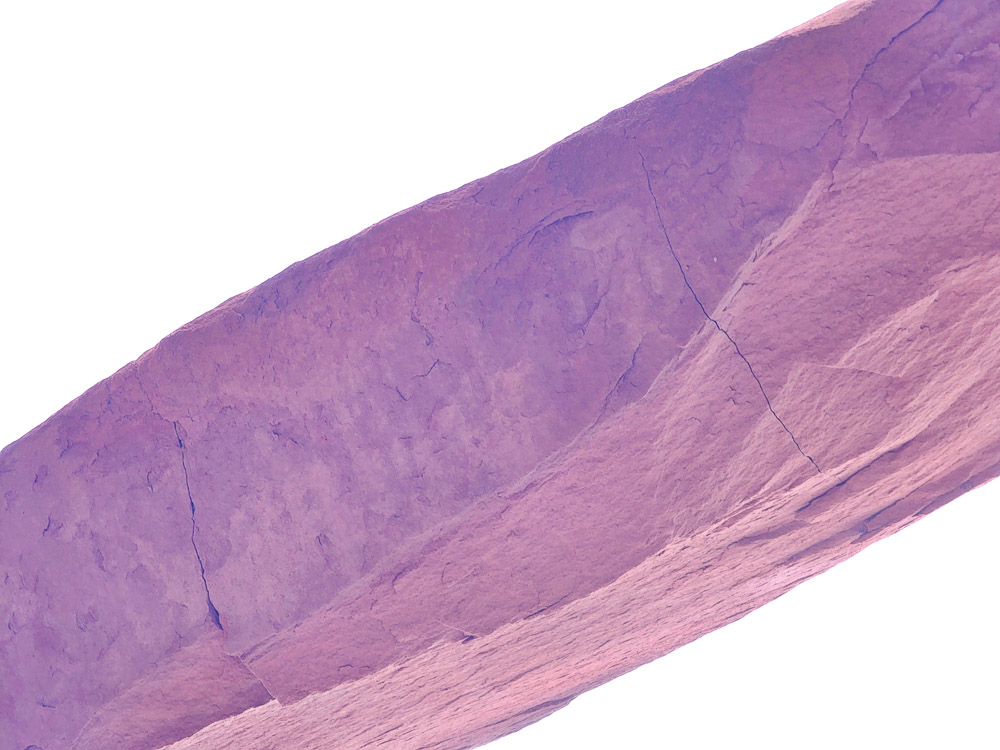
If you’re up for another steep scramble, you can actually climb into the bowl beneath the arch itself. From here, you get a close-up view of the span as it stretches gracefully between the canyon walls. The arch creates a natural window, and Ring Arch beautifully frames the canyon behind you.
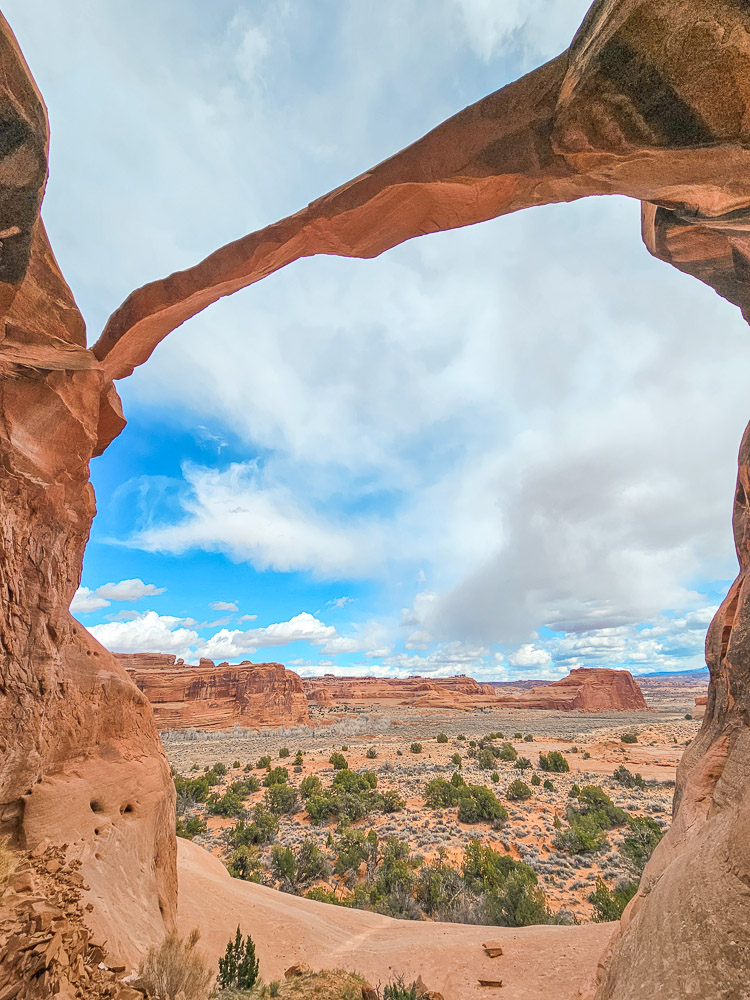
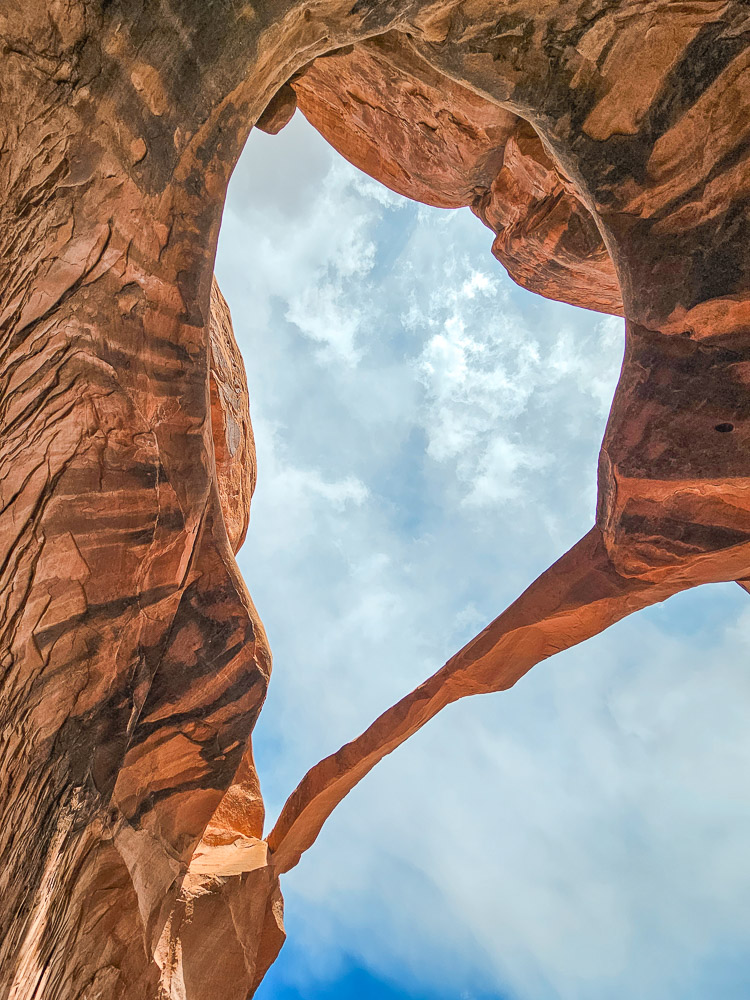
Bonus
If you have an extra half hour, you can extend your hike with a detour to The Tunnel. This natural passage cuts through a nearby rock fin and is large enough to climb inside. It adds about a mile round trip and is easy to tack on if you have the time and energy.
We were planning on heading over there, but unfortunately did not make it as a storm was coming in, and we decided to beat it back to our car. But if you’re interested, you can see the path to it on AllTrails or Google Maps.
Final Thoughts
Arches are one of the rarest formations in the world, partly due to the unique set of circumstances needed to make them, but also because they are transitory by nature. That constant shifting and temporary nature only adds to their beauty.
Ring Arch exemplifies all of this. It is delicate, majestic, yet so clearly fleeting, and it may be gone in 20 years. If you have a chance to add this to your next trip to Arches National Park, I highly recommend it.





